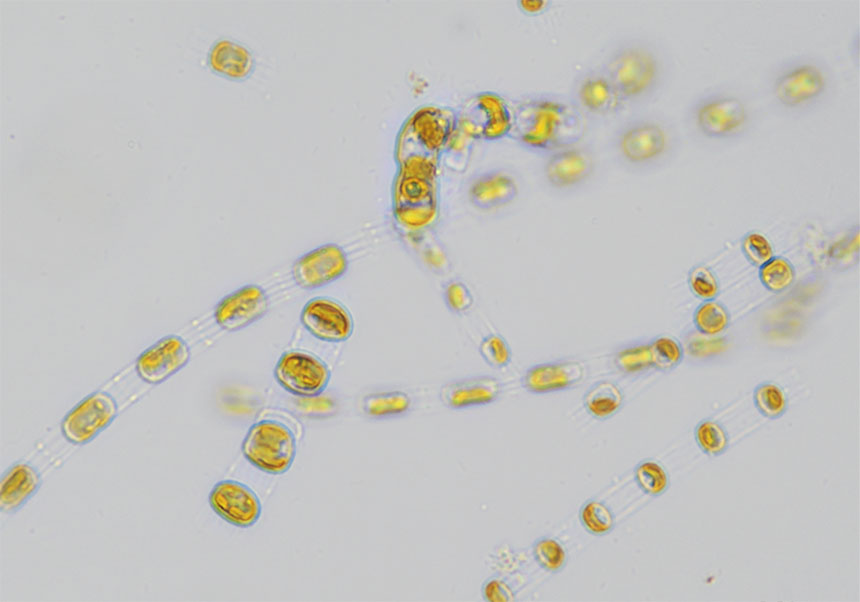The response capacity of marine phytoplankton species to global warming confirmed
- Science Park
- April 16th, 2024

Mara Segovia, Erasmus+ researcher at the Cavanilles Institute of Biodiversity and Evolutionary Biology (ICBiBe) of the University of Valencia, has participated in a study that reveals the response capacity of seaweed to the effects of climate change. Over the last 60 years, diatoms – the subject of this study – have increased their optimal temperature by 1°C to adapt to global warming. The work, published in Nature Climate Change and led by Åbo Akademi University (Finland), offers new perspectives for the analysis of the evolution of aquatic ecosystems.
The study confirms a notable adaptation of certain phytoplankton organisms to global warming. These are diatoms, microorganisms in the form of seaweed, which are involved in the production of oxygen and carbon capture, which contributes significantly to the climate regulation of marine ecosystems and, therefore, favours the health of the planet.
The work specifically delves into the adaptation of the diatom Skeletonema marinai to increasing temperatures resulting from global warming. And it determines that, over 60 years, the optimal temperatures of S. marinoi have increased by ~1°C, which means a greater ability to thrive at higher temperatures. This adaptation has led to changes in diatom cell size and growth rates, likely improving nutrient uptake capacity in modern S. marinoi.
To obtain results, the team has based itself on the back-in-time research method, which consists of returning to life seeds of terrestrial plants in a period of dormancy, located in the sedimentary archive of the seabed. “This approach allowed us to analyse changes in the diatom population over time and understand their adaptive mechanisms”, explains Mara Segovia, Erasmus+ researcher at the Marine Zoology Unit of ICBiBe (University of Valencia) and one of the authors of the article in Nature Climate Change. “By examining changes in optimal temperatures, cell size and gene expression patterns of resurrected S. marinoi strains – from the last 60 years – the research offers important insights into the species’ response to environmental changes”, adds the scientist.
The research setting has been the Baltic Sea, which has emerged as a particularly relevant environment to study the effects of global change. Its shallower depth and lower water exchange, compared to other bodies of marine water, allow the impacts of climate change and eutrophication – pollution derived from excess nutrients from human activity – to be more palpable and evident. “This makes the Baltic Sea an ideal natural laboratory for observing and understanding the effects of global warming on marine ecosystems, providing valuable ideas to address global environmental challenges”, says Mara Segovia.
Furthermore, the study identified modifications in gene expression patterns related to nitrate metabolism in modern strains grown at high temperatures and clarified the genetic basis of their adaptive responses. “Our approach, based on resurrected strains, proves the potential for adaptation of natural marine diatoms to rising temperatures as global warming progresses, and exemplifies a realistic rate of evolution, which is an order of magnitude slower than the estimated by experimental evolution”, concludes the director of the research, Conny Sjöqvist (Åbo Akademi University, Finland).
Reference:
Temperature optima of a natural diatom population increases as global warming proceeds. G. S. I. Hattich, S. Jokinen, S. Sildever, M. Gareis, J. Heikkinen, N. Junghardt, M. Segovia, M. Machado & C. Sjöqvist. Nature Climate Change (2024)
https://www.nature.com/articles/s41558-024-01981-9
File in: Ciencias de la Vida










